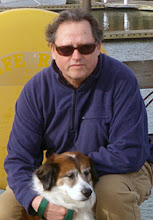Last week the US/ EPA celebrated its 40th anniversary and honored the many accomplishments of their staff to identify and improve human and environmental conditions. Please read the remarks by Administrator Lisa Jackson, who has strongly lead the essential direction of this front line government agency for the past two years.
Very noteworthy to this blogger is last month's release for comment, the proposed fragrance ingredient enhancements to the DfE (Design for the Environment). This report was prepared by the EPA in consultation with Fragrance material toxicologists, trade associations, cleaning industry formulators, fragrance industry product development and marketing representatives. Equally important was the sponsorship and organizational guidance from GreenBlue and CleanProduction.
The process of developing and/ or organizing attributes and criteria for human and environmental safety guidelines fell to a group called the Fragrance TAC Team. Wisely the TAC did not cover air fresheners (allergens) or personal care liquid soaps and shampoos. The focus was on standards for institutional and consumer product cleaners, the largest volume of product usage for worker and consumer safety. It still took nearly four years for the proposal to be submitted.
Several scientific norms and task behaviors needed to be addressed before the TAC was comfortable to be forthcoming in the twenty plus telephone conferences and side meetings. One reason, most members of the Team were involved in the "tox" reviews of the fragrance formulas. Almost all submissions for sponsored formulators were rejected and assigned to a pending status. These TAC members were confused what exactly to do and instruct their Perfumers. They all looked to work with detailed guidance from RIFM/ IFRA the leading trade association. Membership requires strict adherence to RIFM guidelines. ["Anyone who conducts an argument by appealing to authority is not using his intelligence; he is just using his memory", Leonardo de Vinci (1452-1519)]
A second reason, RIFM's extensive fragrance material data is based on QRA (quantitative risk assessment), with no effective link to a Hazard based approach vital to environmental modeling for population centers. After several failed strategy attempts to "shrink environmental science" as not equal, the top toxicologists and trade associations relented because they had no environmental data for the workhorse fragrance materials used in cleaners. Essentially in the last decade, they underachieved their own profession, trade members and employers. Worse they had no authority to quit the TAC.
The lead industry scientists did rally beyond their negociant procedures and assembled new criteria for essential oils, a material that will need closer examination because of a lack of quality standards between perfume and technical grades. Going forward, instead of merging DfE data from RIFM members, a consortium was formed. Their first task is to hire a consultant (budget $150,000) as the popular complaint is the proposal document is too complex. Or is this retort still a rivalry of aims? Certainly the work of the consortium will be time consuming and cause an undetermined delay. Ummm.
Subscribe to:
Post Comments (Atom)






No comments:
Post a Comment